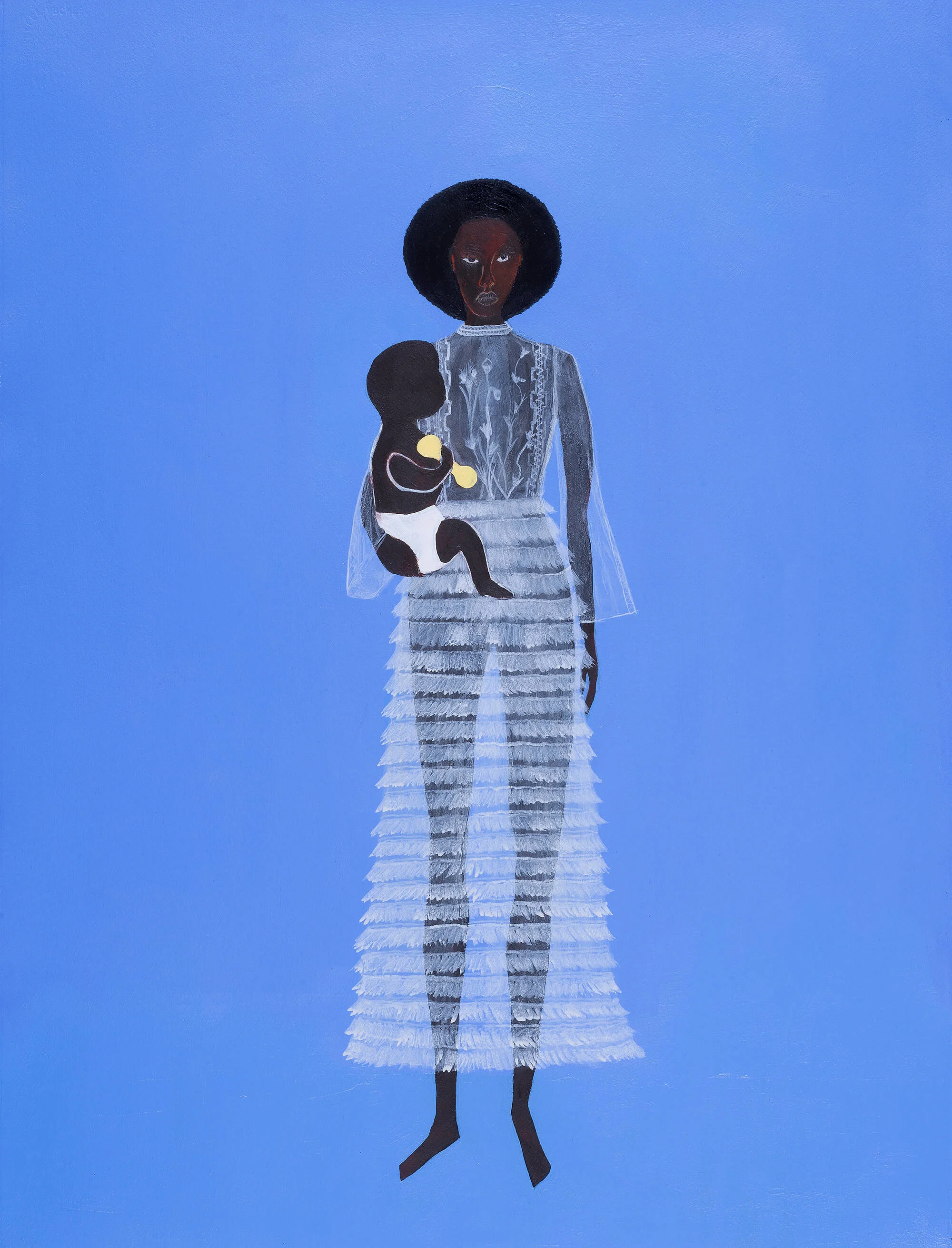
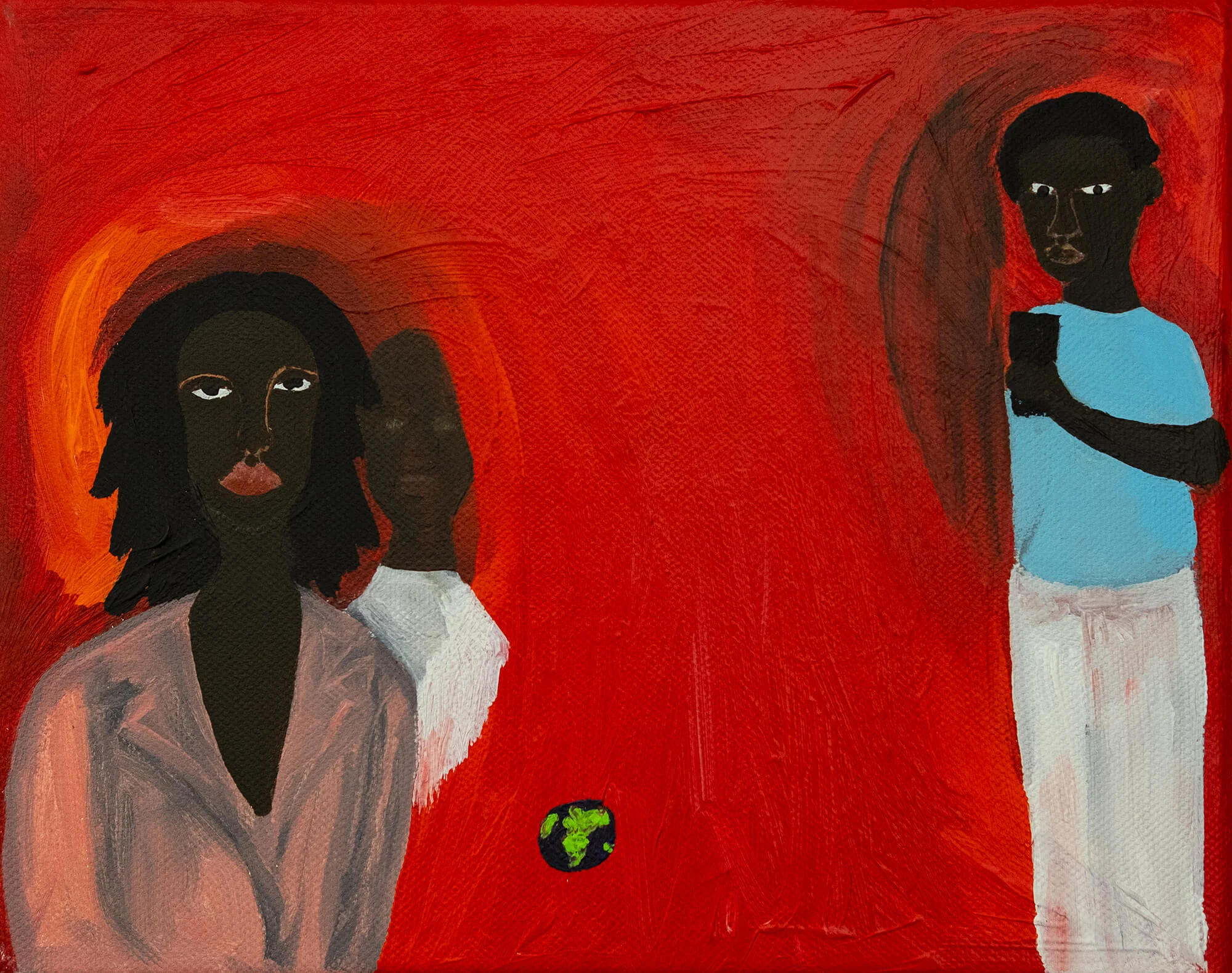
Delphine Desane began painting while away from a ten-year career in fashion on maternity leave, and hasn't looked back since. Some of her work is inspired by a photograph she sees or a memory she recalls, and her portraits of women draw from her own experiences of motherhood and Black womanhood. She tells Alix-Rose Cowie how she channels these personal experiences into her painting.
Between diaper changes, waking up throughout the night for feeds and everything else that comes with keeping a tiny human being alive, a lot of new moms experience a shift in identity. For artist Delphine Desane, the birth of her son three years ago set into motion an entire career change. On maternity leave from a decade-long job in fashion working for the likes of Miu Miu and Prada, she began painting as a therapeutic practice to reconnect with herself. And she never stopped. “Becoming a mother has been a rebirth for me, physically and emotionally,” she says. “Motherhood is intense and magical at the same time. If it wasn't for him who knows what I would be doing now.”
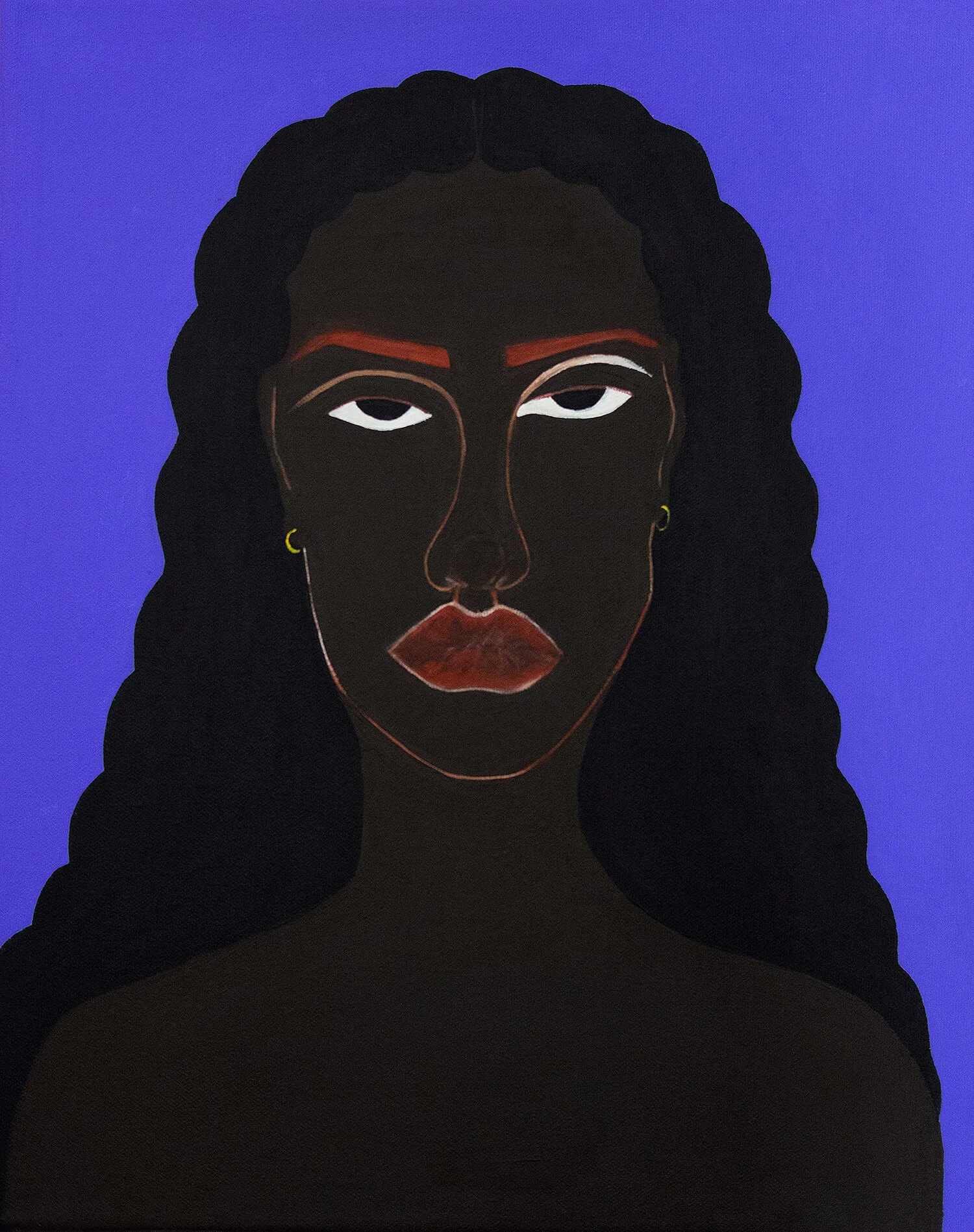
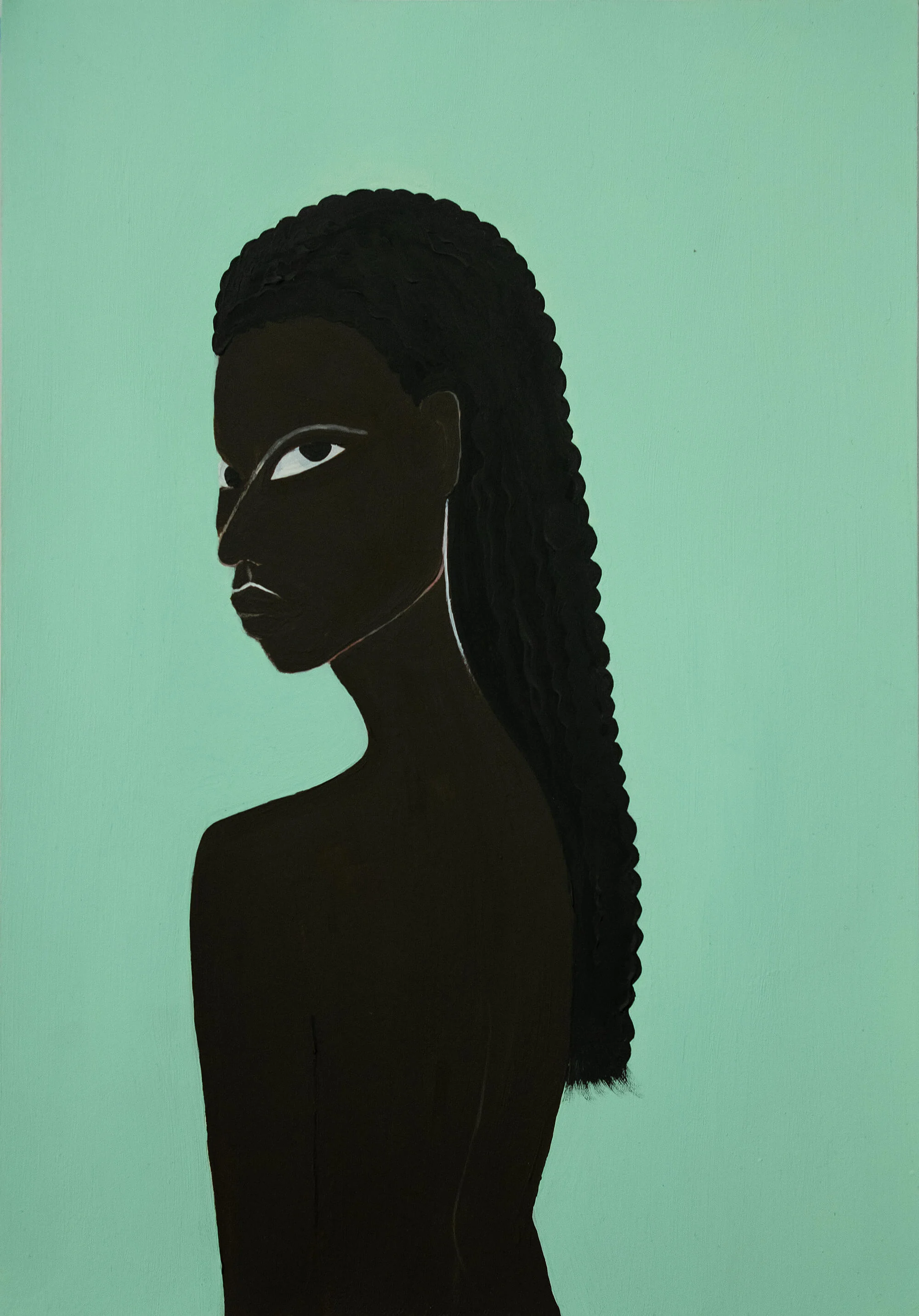

I am really interested in depicting the inner state of mind of the subject portrayed.
Born and raised in France to Haitian parents, Delphine paints people, mostly women, who could be family. “They are US,” she says, people of the African and Caribbean diaspora. Even though her women are painted with minimal detail, their eyes are full of expression: sometimes cynical, sometimes gentle, sometimes deadpan. A caption in French on a cropped pair of eyes on her Instagram page translates to “the bitterness”. The eyes are often the last thing she paints, taking her time to get the expressions of her subjects just right.
In many of her paintings, Delphine’s subjects are depicted against a flat or blended color background. There’s no hint at their circumstance. She does this to emphasize their interior lives: their emotions, vulnerability and beauty. “I am really interested in depicting the inner state of mind of the subject portrayed rather than placing them in a social, economic or specific place,” she says. Sometimes she breaks her own rules, but only just. In Colette, Louis and their artifacts, a couple stand amidst their art collection and in the first of her ongoing Oaxacan series, a woman is painted with two silver fish inspired by an interaction with two fishermen on a morning hike in the Mexican state.
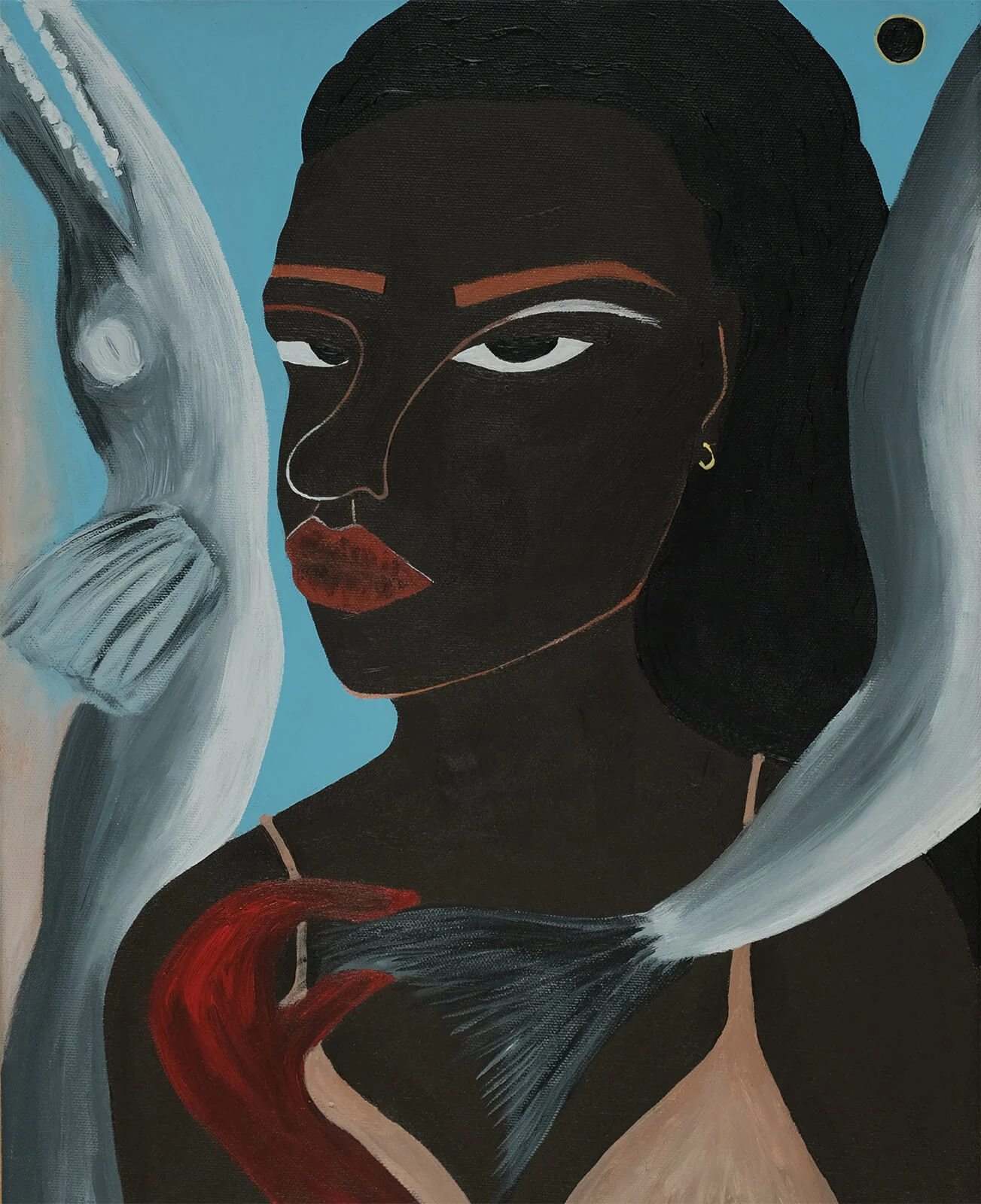
Another departure from her striking, minimal portraits are her paintings inspired by mythologies of ancient Greek and African cultures. In The Judges, a coven of women convene for a ritual of sorts beneath an totemic archway and in Deux Femmes flânent dans la cour d’un jardin Magique, two women stroll through a magic garden, their glowing auras painted in bright red and orange. Painted up close and personal or within a larger mystical scene, the thread that runs through her work is the honoring of black women.
Becoming a mother has been a rebirth for me, physically and emotionally.
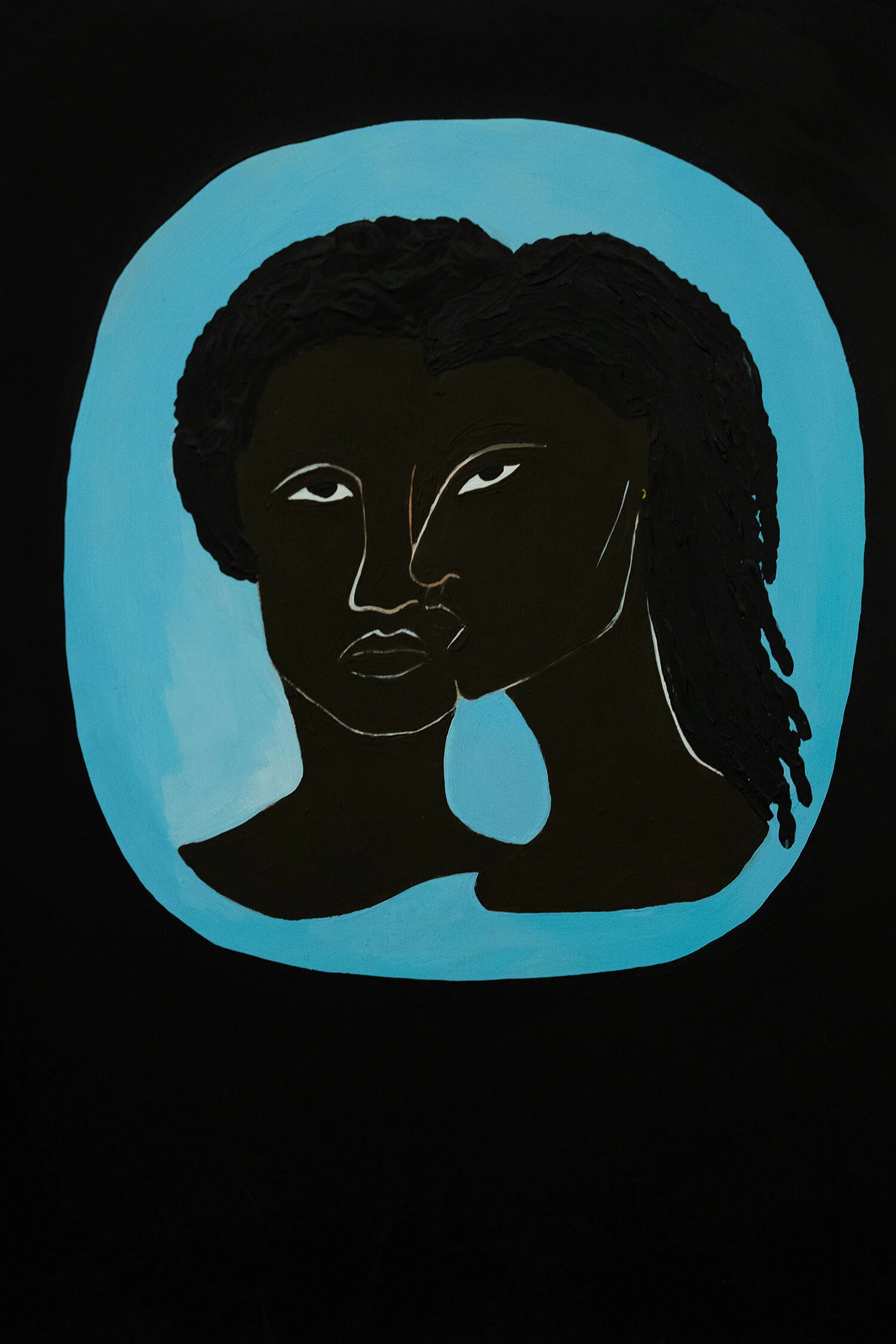
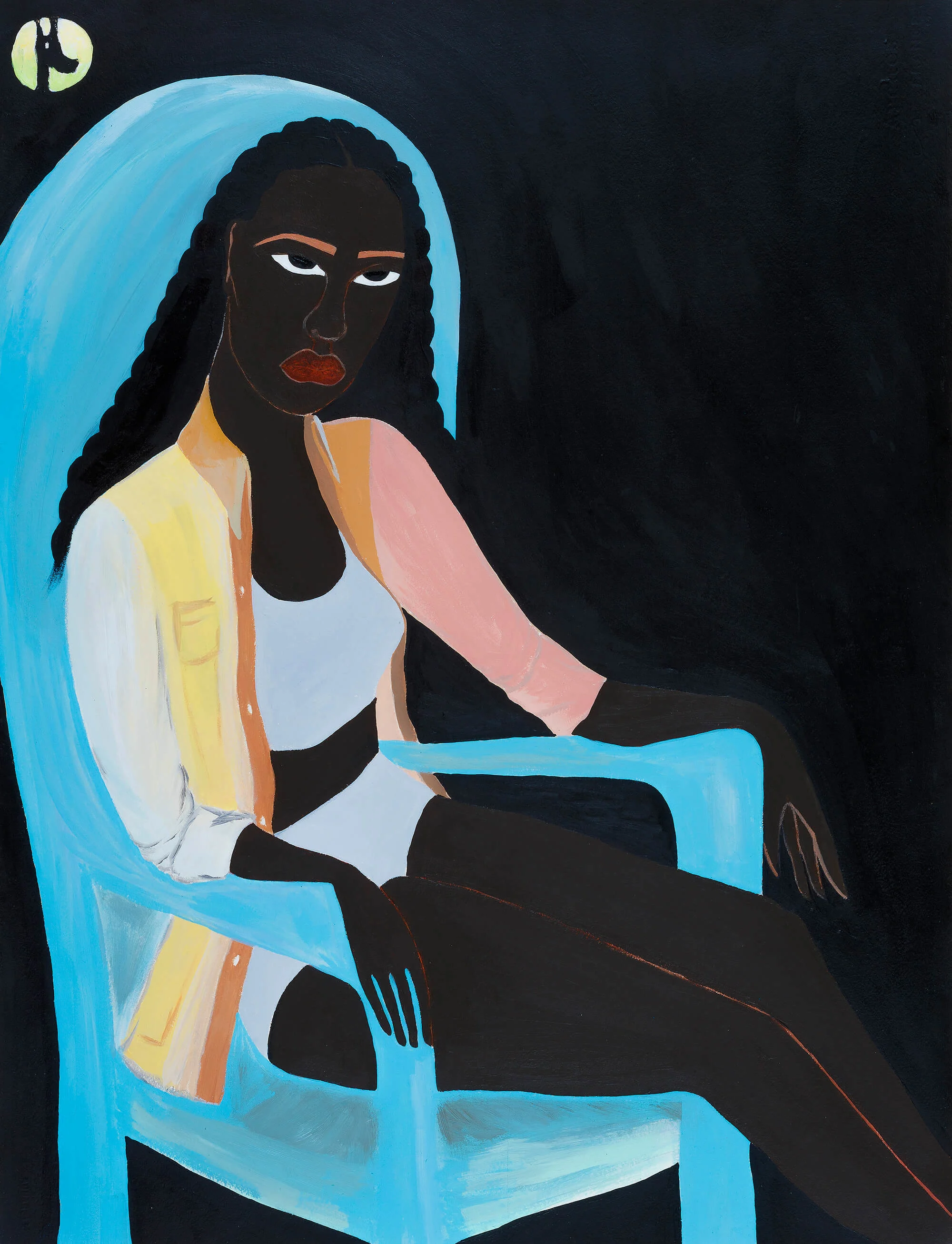
Two years into Delphine’s painting career, fashion came calling again after the creative director of Vogue Italia stumbled across her work on Instagram. She was invited to be one of seven artists to paint a cover and fashion editorial for the history-making January 2020 issue of the magazine which swapped out all of its glossy photoshoots for illustrations. The magazine hoped to make a statement in sustainability by reducing the environmental implications of their usual photoshoots. In doing so they also make a case for fashion as art.
For her cover, Delphine painted a portrait of model Assa Baradji in a pink Jacket worn over her shoulder from the Gucci Spring/Summer 2020 show, against a deep red background. Inside the issue, she painted a visual series featuring Dior clothes on more women of color. Beyond depicting the clothes, she had total creative freedom to paint her women how she liked. “It was more about capturing and expressing a feeling that I had in that moment,” she says. She used this freedom to do what she does in all of her artwork: paint spaces for women like her.
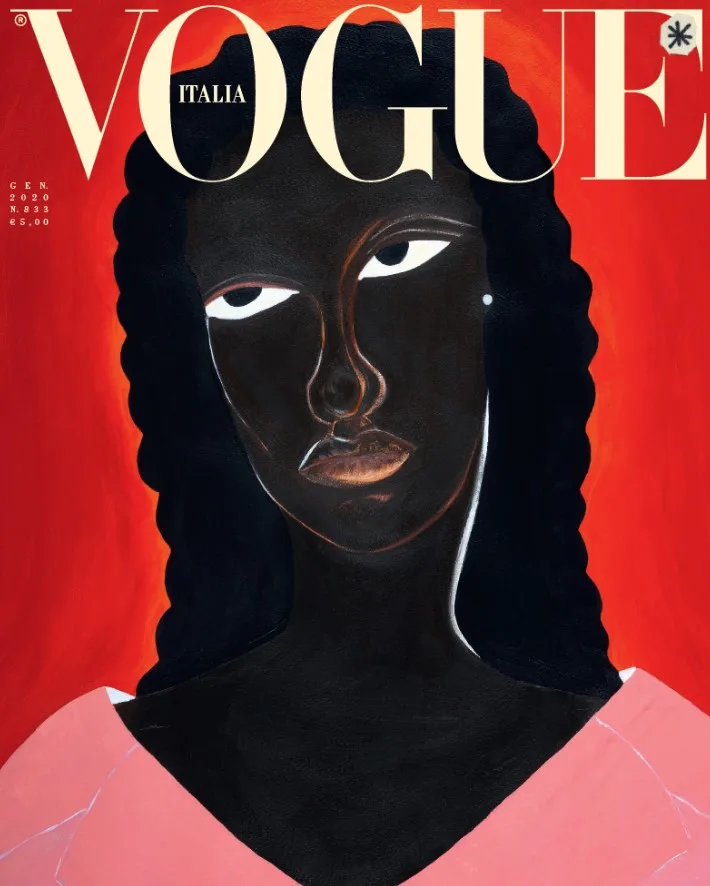
The sources Delphine paints from are various, but for the Vogue Italia assignment she looked to Blvck Archives, a curated visual archive that shares images of black life throughout history to make up for a historic lack of representation in mainstream media. She scoured through the collection for images of black motherhood and black life in general which inspired her series. “Some of my works are inspired by a photograph, a sculpture, a memory, a feeling, my imagination or a combination of those,” she says. “Some are inspired by my personal experience as a black woman and a mother.”
In one image she painted for Vogue Italia, a mother stands against a stark background in a sheer, embroidered white dress hoisting her baby up onto her hip. It’s just the two of them in a periwinkle blue expanse; but it manages to capture the many multitudes of motherhood, womanhood in one succinct, powerful image.
